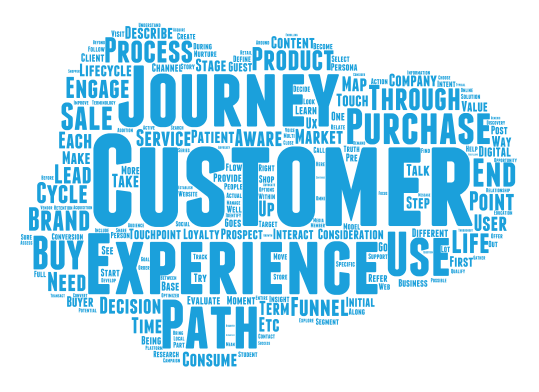
Get your FREE 30-day trial.
Please complete all fields.
 Marketing strategy has evolved more quickly in the past five years than it did in the past 500. For centuries, print advertising and mass media dominated until the internet changed everything, creating opportunities to craft unique customer journeys on an ever-larger palette of platforms.
Marketing strategy has evolved more quickly in the past five years than it did in the past 500. For centuries, print advertising and mass media dominated until the internet changed everything, creating opportunities to craft unique customer journeys on an ever-larger palette of platforms.
Even the phrase “customer journey” is new to marketing vocabulary, although most senior-level marketers today (86%) agree on the importance of the concept, according to new research published in The State of Marketing Leadership.
Yet the customer journey is more than a phenomenon, buzzword, or trend; it’s a requirement. Respecting and refining the customer journey is the only way for companies to succeed in the age of the customer.
The State of Marketing Leadership
How Senior-Level Marketers are Redefining Success and Integrating the Customer Journey
{Download Now}
Our survey asked respondents to answer questions about the customer journey based on Salesforce Marketing Cloud’s definition: “all of the interactions a customer has with brands, products, or services across all touchpoints and channels.” We wanted to know how a customer journey focus was penetrating marketing leadership roles and how leaders in B2B vs. B2C might see the customer journey differently.
 Overall Importance of the Customer Journey
Overall Importance of the Customer Journey
Today, most senior-level marketers (86%) agree that it’s absolutely critical or very important to create a cohesive customer journey across all touchpoints and channels. Another 11% view the customer journey as moderately important. However, the number of marketers currently using the phrase “customer journey” is lower: 40% of marketing leaders surveyed said their company uses the term “customer journey.” It’s possible that an increased focus on customers’ cohesive experience with brands has already infiltrated marketing strategy across industries, but the term “customer journey” isn’t yet a part of most marketers’ vocabulary. We asked senior-level marketers what terminology their companies use to describe the customer journey. See their responses in this word cloud.
When it comes to businesses of different sizes and their respective customer journey strategies, survey responses showed:
Respondents attributed their inability to create a cohesive customer journey to siloed business teams, as well as a disjointed view of customer data across systems. For example, when asked why they rated their team’s ability to create a cohesive customer journey as not very effective or not at all effective, these respondents said:
B2B Understanding of the Customer Journey
B2B and B2C marketers have different understandings of the customer journey. Of the 510 B2B marketers surveyed, 37% had adopted the term “customer journey” into their overall business strategy. They define the customer journey primarily with words like customer, process, buy, experience, sale, and purchase. These words align with the B2B marketer’s priorities of generating leads and developing new business.
The following chart shows the technologies that B2B marketers find most important to and effective for creating a cohesive customer journey.
 B2B marketers ranked marketing analytics, CRM tools, and content management as the most important for customer journey success; these tools were also rated among the most effective.
B2B marketers ranked marketing analytics, CRM tools, and content management as the most important for customer journey success; these tools were also rated among the most effective.
B2C Understanding of the Customer Journey
Forty-two percent of the 475 B2C marketers surveyed had adopted the term “customer journey” into their overall business strategy, slightly more than B2B companies’ 37%. B2C marketers’ definitions primarily centered on terms like customer, experience, brand, path, and purchase. These terms
align with the B2C marketer’s priority to increase customer satisfaction and create personalized brand experiences.
This chart shows the technologies that B2C marketers find most important to creating a cohesive customer journey, also showing the effectiveness of these channels.
Like B2B marketers, B2C marketers also rated marketing analytics, CRM tools, and content management as highly important to creating a cohesive customer journey, but B2B and B2C marketers differed in some technologies of choice.
For example:

Learn more about what's top-of-mind for more than 900 senior-level marketers in The State of Marketing Leadership, a new a joint research report from LinkedIn and Salesforce Marketing Cloud.